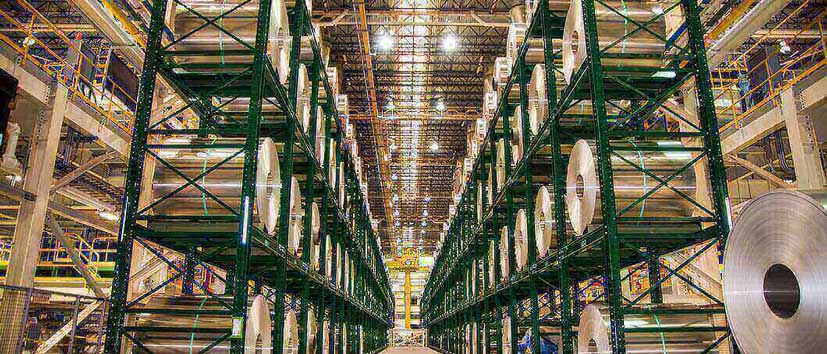Manufacturing is one of the most dynamic sectors of the U.S. economy, accounting for more than a third of our economic output. While the past several decades have seen millions of jobs moving offshore, American factories still maintain a significant component in securing our economic future. Our competitive edge is sharp, yet productivity growth stats indicate our manufacturing community could emerge as an even stronger force by implementing strategies to increase productivity and throughput.
Recent figures show productivity among the majority of U.S. manufacturers is on a downward slide, dropping an average of 0.4 percent per year between 2011 and 2015. The trend presents both a threat and an opportunity. The threat to our global competitive standing may be the more obvious of the two, but the opportunity for industrial manufacturing companies can easily be found by asking the right questions when it comes to material storage and handling.
The number one question to uncover the solution to effective storage
Visit just about any manufacturer that handles heavy raw materials and the pictures inside are nearly identical. Large stacks of coils or bundled tubing scattered around the floor waiting to be retrieved and then moved to the correct machining center at another location in the plant. Aside from the obvious safety issues, this long-held storage solution is costing American manufacturers lost time and profits due to material damage and downtime as materials are located, retrieved and moved. The solution to reducing losses and increasing productivity often starts with the simple question – how does your current storage system impact manufacturing efficiency?
“It’s a fundamental question that’s often overlooked. Industrial manufacturers have not had anyone ask them what they are trying to accomplish or explore how they process inventory, right down to the orientation of the material when it’s initially received and stored,” states Tracy Buck, Industrial Storage Sales Engineer at Ross Technology. “The best storage solution is found in the answers to these questions and it’s always fun to see their excitement when they realize these heavy materials can be stored vertically and moved with an automated crane system.”
A multi-dimensional approach to vertical storage
The concept of vertical storage for loads up to and even exceeding 80,000 pounds is catching the eye of steel centers, toll processors and auto part manufacturers who have long had to settle for using available floor space for coils and dies. They are intrigued by a concept that offers a safer and more streamlined approach to doing business.
Vertical storage frees up valuable floor space, improves safety, reduces material damage like creasing and increases productivity by improving the product retrieval process.
Add in a multi–dimensional strategy that integrates the rack system with an automated retrieval system, and suddenly the face of material handling takes on a whole new look. For the first time, all of the essential entities are working in tandem to create efficiencies that at one time seemed unfathomable for large industrial storage applications.
“As an industry, the education is really in gaining an awareness and understanding that there is a racking system not only capable of storing massive industrial materials, but also capable of supporting a crane system that can automatically select and move those materials to the proper location,” states Buck. “And, for companies that don’t want to invest the capital required for a new crane, narrow aisle sideloaders are a great option for efficiently handling large coils, dies, sheet and tubing stored vertically.”
Because storing and accessing heavy coils and dies can pose a real challenge, the best time to ask those fundamental questions about the internal process and inventory management is before construction of a new plant begins. This will ensure the floor is reinforced and constructed to support the weight of the crane and the capacity to hold the weight of the coils. For manufacturers adding a racking system to an existing building using an existing crane, it’s important to work with a company that has the expertise in designing structural storage solutions and a firm understanding of how to integrate the racking with the crane’s capabilities.
Sources:
Economic Policy Institute, January 2015
Washington Times, November 2016


